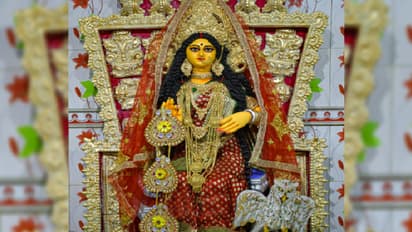Kojagiri Purnima 2024: Know why Goddess Lakshmi resides in the Lotus Flower
Published : Oct 15, 2024, 05:28 PM IST
According to Puranas and Sanatan Dharma, Goddess Lakshmi resides not only in the Kshirsagar (ocean of milk) but also in five other places. These include fingertips, the forehead of an elephant, and the back of a Bilva leaf, among others.
Read more Photos on
